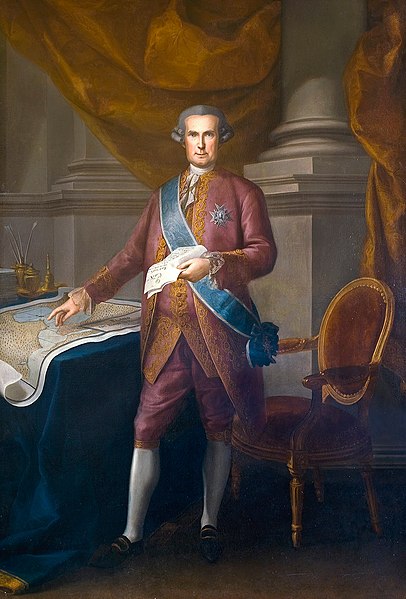The Bourbon Reforms consisted of political and economic changes promulgated by the Spanish Crown under various kings of the House of Bourbon, since 1700, mainly in the 18th century. The beginning of the new Crown's power with clear lines of authority to officials contrasted to the complex system of government that evolved under the Habsburg monarchs. For example, the crown pursued state predominance over the Catholic Church, pushed economic reforms, and placed power solely into the hands of civil officials.
Charles III of Spain, who initiated the vigorous programs of reform.
José de Gálvez, Visitador general in New Spain and later Minister of the Indies.
Palacio de Minería, Mexico City. The crown sought to make silver mining more productive and the silver magnates ennobled; it created the College of Mines and the Royal Mining Court
The monarchy of Spain or Spanish monarchy is the constitutional form of government of Spain. It consists of a hereditary monarch that reigns as the head of state, being the highest office of the country. The current King is Felipe VI since 19 June 2014, after the abdication of his father, King Juan Carlos I.
Monarchy of Spain
Felipe of Bourbon and Greece takes the oath before the Cortes Generales during the proclamation ceremony at the Palacio de las Cortes, Madrid the 19th of June, 2014.
Statue of Queen Urraca in the Parque del Buen Retiro in Madrid. Urraca succeeded as queen in 1108.
A copy of the Spanish Constitution, signed by King Juan Carlos, is held at the Palace of the Cortes.







